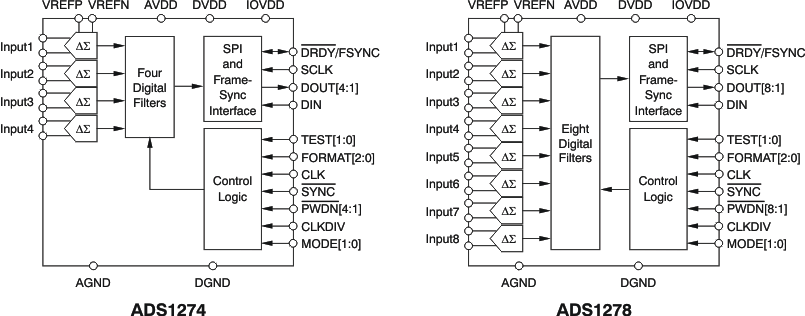SBAU436A January 2024 – February 2024
1.4 Device Information
The ADS1278 is a 24-bit, 8-channel, simultaneous sampling delta-sigma ADC with data rates up to 144 kilosamples per second, as shown in Figure 2-2.
Traditionally, industrial delta-sigma ADCs offering good drift performance use digital filters with large pass-band droop. As a result, these delta-sigma ADCs have limited signal bandwidth and are the best choice for low-frequency measurements. High-resolution ADCs in audio applications offer larger usable bandwidths, but the offset and drift specifications are significantly weaker than respective industrial counterparts. The ADS1278 combines these types of converters, allowing high-precision industrial measurement with excellent dc and ac specifications.
The high-order, chopper-stabilized modulator achieves very low drift with low in-band noise. The onboard decimation filter suppresses modulator and signal out-of-band noise. This ADC provides a usable signal bandwidth up to 90% of the Nyquist rate with less than 0.005dB of passband ripple.
Four operating modes allow for optimization of speed, resolution, and power. All operations are controlled directly by pins; there are no registers to program. The device is fully specified over the extended industrial range (–40°C to +105°C) and is available in an HTQFP-64 PowerPAD™ package.
 Figure 1-2 ADS1274 and ADS1278 Block Diagram
Figure 1-2 ADS1274 and ADS1278 Block Diagram